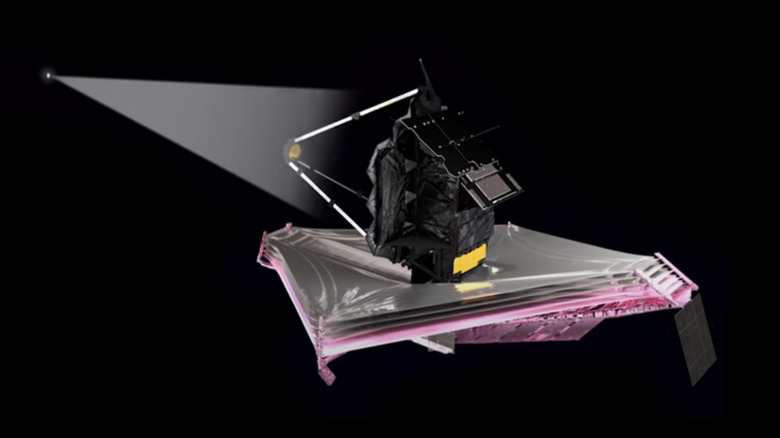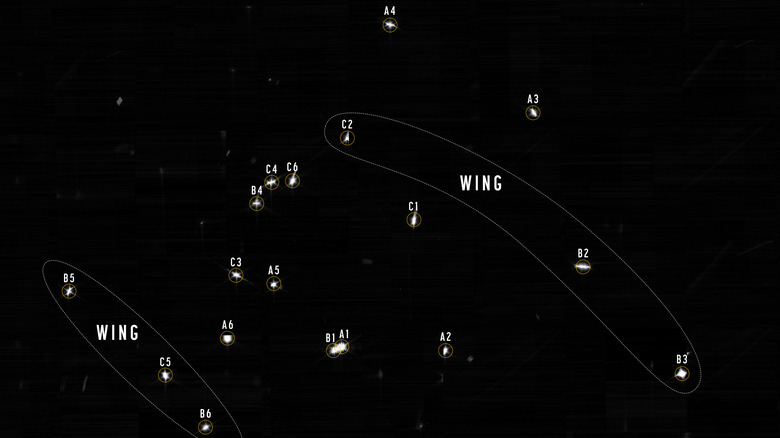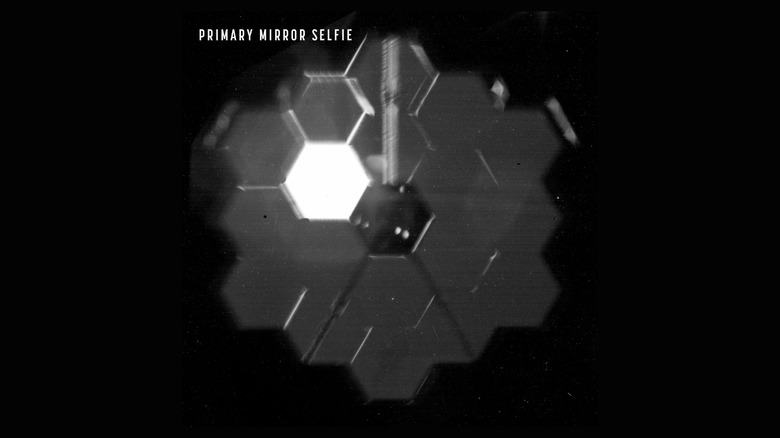The James Webb Space Telescope's First Photo May Be Its Most Important
While there are several months left to go before the James Webb Space Telescope is fully deployed, calibrated, and ready for its scientific mission, we're already starting to see some real results. NASA has shared the first images captured by the James Webb Space Telescope, and even though they may not show us the secrets that lay hidden in the universe's past, this initial data could be just as important as any James Webb is likely to capture in the future.
That's because, without the images captured in this first wave, there probably wouldn't be any subsequent images at all. The first images coming from the James Webb Space Telescope are calibration shots taken of the same star. The goal is to make sure the primary mirror is aligned properly so that the telescope's Near Infrared Camera (NIRCam) is ready to collect light, and NASA is giving us a look at that process today.
More than meets the eye
In a post to the Webb Telescope blog, NASA shared the first images taken by the NIRCam. Technically speaking, there is no single image that is the very first, as what you see above is a mosaic that combines 18 different images.
Each of those dots you see on the image is actually the same star – HD 84406, which NASA describes as a "bright, isolated star in the constellation Ursa Major." Each appearance of HD 84406 is how it appears to each one of the 18 different mirror segments on James Webb's primary mirror, reflected into the NIRCam's sensors. NASA, in other words, is capturing the preliminary data it needs to ensure that each mirror segment is properly aligned ahead of the start of James Webb's scientific mission.
Capturing each of these images wasn't as easy as pointing the telescope at HD 84406 and snapping the shutter 18 times. Rather, NASA says that the process of capturing these images involved pointing the James Webb Telescope at "156 different positions around the predicted location of the star." James Webb captured 1,560 images as that was happening, which translates to "54 gigabytes of raw data." The images it captured were then stitched into this larger image, which will help NASA scientists align each mirror segment properly.
A lot of work left to be done
This is just the first step in an alignment process that will take around a month, NASA says. "What looks like a simple image of blurry starlight now becomes the foundation to align and focus the telescope in order for Webb to deliver unprecedented views of the universe this summer," NASA wrote in that blog post. "Over the next month or so, the team will gradually adjust the mirror segments until the 18 images become a single star."
Of course, NASA scientists aren't just excited to see images of a star come back from James Webb; they're excited because this is confirmation that the mirrors are successfully reflecting light to the NIRCam. For now, the NIRCam is the only of James Webb's four instruments that is functional – the other three are in the process of cooling down to their operating temperatures.
NASA's ongoing alignment of the mirror segments also gave us the image you see above, which is a "selfie" of the James Webb telescope. This view is granted to us by "a specialized pupil imaging lens inside of the NIRCam instrument designed to take images of the primary mirror segments instead of images of space," according to NASA. While it's an interesting picture, we aren't likely to see many more of them, as NASA says that lens is used only for "engineering and alignment purposes." In any case, this brings us one step closer to the start of James Webb's scientific mission, which should provide us some awesome pictures to look at beginning this summer.


